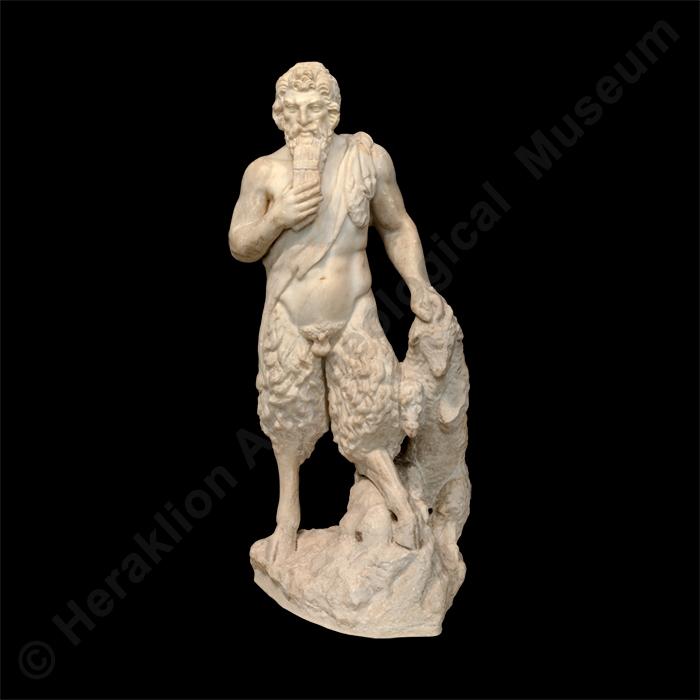Statue of Pan
Γ472
White marble
Part of Pan's syrinx and right arm, and ram's head and foreleg broken.
Total height: 109 cm.
Argyroupoli (Lappa)
Roman period:
2nd c. AD:
Gallery:
XXVIICase:
Not in caseExhibition thematic unit:
Sculpture. Hellenistic period (3rd-2nd c. BC) Roman period (1st c. BC-3rd c. AD)Statues of gods
Description
Small statue of the shepherd god Pan. His typical mixed features of human head and torso with goat legs, horns and ears are quite finely rendered. He is standing almost frontally, on a rock-shaped base indicating the bucolic landscape, gripping a ram by the horns with his left hand and slightly pulling it up on its hind legs. In his right hand he holds his distinctive syrinx (panpipes), ready to play. Instead of clothing, he is wearing a ram’s skin diagonally across his body, tied on the left shoulder. The mortise in the top of his head was intended to secure the separate horns with an iron dowel and lead attachment. All the rear surfaces of the sculpture are roughly worked, meaning that it was probably set in a niche or against a wall. It was probably an ornamental feature of a villa or a public building (such as a bathhouse) rather than a cult statue.Bibliography:
N. Marquardt, Pan in der hellenistischen und kaiserzeitlichen Plastik, Bonn 1995, 97, no. 2, pl. 14, 1. Dimopoulou-Rethemiotaki Ν., Το Αρχαιολογικό Μουσείο Ηρακλείου, Athens 2005, 382, 388. K. Sporn, "The Cretan Venus", Überlegungen zur Skulpturenausstattung von römischen Privathäusern auf Kreta", in P. Karanastasi, Th. Stefanidou-Tiveriou, D. Damaskos (eds), Γλυπτική και κοινωνία στη ρωμαϊκή Ελλάδα : καλλιτεχνικά προϊόντα, κοινωνικές προβολές. Διεθνές συνέδριο, Ρέθυμνο, 26-28 Σεπτεμβρίου 2014, Thessaloniki 2018, 284.Author:
K. S.Photographs' metadata
